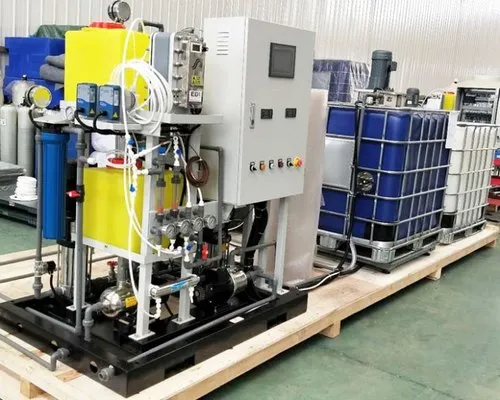The process of adblue making is highly automated. However, large capacity machines require two or three operators. In addition to offering the product, the adblue making machine offers service to the clients. There are various features that make the process more efficient. Here are some of them:
urea concentration sensor
Designed for use on Adblue making machines, the urea concentration sensor is a precision instrument that supports the monitoring of the Adblue tank. It helps ensure that the correct concentration of Adblue is used and prevents improper refuelling. The sensing device works by detecting the thermal conductivity of a binary mixture of urea and water. The thermal conductivity varies with variations in urea concentration, allowing for accurate measurements of the concentration of Adblue.
Urea is defined as any aqueous solution containing urea. The invention works well with eutectic water/urea solutions, which are typically around 31.8% to 33.2% by weight and contain 18.0% to 21% ammonia. The sensor measures urea concentration in real time and has several benefits. Its precision allows it to operate under a wide range of exhaust gas compositions.
Reverse osmosis unit
Reverse osmosis (RO) is a process used to produce ultrapure water from various types of water. This treatment is used to remove contaminants and impurities from water. A reverse osmosis system includes a reverse osmosis membrane element, a pretreatment unit, and a follow-up unit. The machine also includes a pressure control assembly for maintaining the intake pressure.
The first step of reverse osmosis water treatment involves protecting the membrane. This is done by removing larger particles. Next, water is filtered by passing through a carbon block or sediment filter. Lastly, water is pushed through a semi-permeable membrane that is a specialized filtration technology.
Requirements for operator
The operator of an AdBlue(r) making machine is responsible for the efficient production of AdBlue. The system should be able to accurately measure the amount of AdBlue that has been made. The machine’s accuracy must meet a standard set by the European Measuring Directive. For this purpose, the machine must have a certified measuring system.
The operator should be familiar with the process involved in the production of AdBlue. They should also be aware of the different equipments that are used in the process. This includes the hose that connects to the AdBlue tank. The hose is powered by a battery. The operator must be able to monitor and maintain the flow rate. The machine should also have a flow computer that processes readings and records the delivered volume. The data can be sent via GSM to the service station operator for further analysis.
Costs
The AdBlue making machine can make up to 32.5 litres of a highly purified liquid. It’s made from deionised water and urea. Urea is present in our urine and is a common fertiliser. The finished product is much purer than the water that’s found in pee. It’s also much cheaper to purchase because its price starts at 61p per litre.
The process for making AdBlue begins with pre-filtration. The feed water is passed through two stages of reverse osmosis under pressure. The water splits into two, the permeate, or the de-mineralized water, and the concentrate, which contains all of the impurities. The pre-filtration of the feed water may include using a carbon filter, sands filter, or resin filter. The final step is filtration, which can be done using an ion exchange system or other filtration method.
Benefits
An AdBlue making machine is a valuable tool for manufacturers who need to meet emission standards. The machine is capable of filling IBC tanks. The machine includes a weight scale for the tank, circulation pump, spray nozzle, and a PLC that controls the process. The machine also uses compressed air to control the spray nozzle.
AdBlue is an essential fluid for vehicles. The fluid helps to reduce the amount of harmful emissions from passenger vehicles. The solution is a mix of urea and deionized water that is diluted with a catalyst. It is used in trucks, cars, tractors, trains, and boats. It is also used in thermal power plants and generators.

